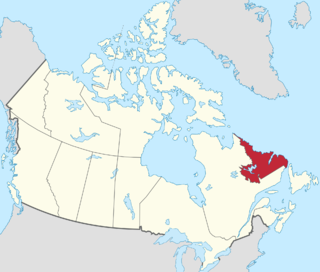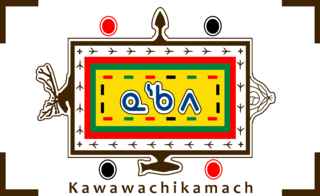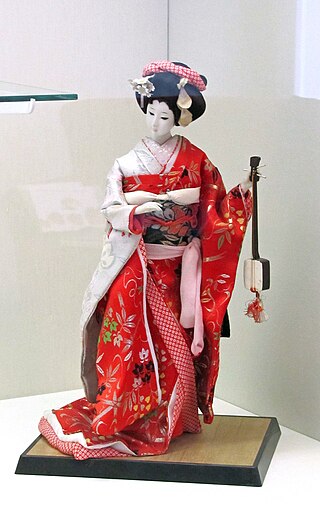Related Research Articles

The Cree or nehinaw are a North American Indigenous people. They live primarily in Canada, where they form one of the country's largest First Nations. More than 350,000 Canadians are Cree or have Cree ancestry. The major proportion of Cree in Canada live north and west of Lake Superior, in Ontario, Manitoba, Saskatchewan, Alberta, and the Northwest Territories. About 27,000 live in Quebec.

Labrador is a geographic and cultural region within the Canadian province of Newfoundland and Labrador. It is the primarily continental portion of the province and constitutes 71% of the province's area but is home to only 6% of its population. It is separated from the island of Newfoundland by the Strait of Belle Isle. It is the largest and northernmost geographical region in the four Atlantic provinces.

The Innu / Ilnu or Innut / Innuat / Ilnuatsh ("people"), formerly called Montagnais from the French colonial period, are the Indigenous Canadians who inhabit the territory in the northeastern portion of the present-day province of Labrador and some portions of Quebec. They refer to their traditional homeland as Nitassinan or Innu-assi.

The Naskapi are an Indigenous people of the Subarctic native to the historical region St'aschinuw, which was located in present day northern Quebec and Labrador, neighbouring Nunavik. They are closely related to Innu People, who call their homeland Nitassinan.

A doll is a model typically of a human or humanoid character, often used as a toy for children. Dolls have also been used in traditional religious rituals throughout the world. Traditional dolls made of materials such as clay and wood are found in the Americas, Asia, Africa and Europe. The earliest documented dolls go back to the ancient civilizations of Egypt, Greece, and Rome. They have been made as crude, rudimentary playthings as well as elaborate art. Modern doll manufacturing has its roots in Germany, from the 15th century. With industrialization and new materials such as porcelain and plastic, dolls were increasingly mass-produced. During the 20th century, dolls became increasingly popular as collectibles.

Japanese dolls are one of the traditional Japanese crafts.

A toboggan is a simple sled traditionally used by children. It is also a traditional form of transport used by the Innu and Cree of northern Canada.

A rag doll is a children's toy. It is a cloth figure, a doll traditionally home-made from spare scraps of material. They are one of the oldest children's toys in existence. Today, many rag dolls are commercially produced to mimic aspects of the original home-made dolls, such as simple features, soft cloth bodies, and patchwork clothing.
Indigenous peoples in Quebec total eleven distinct ethnic groups. The one Inuit community and ten First Nations communities number 141,915 people and account for approximately two per cent of the population of Quebec, Canada.

Kashtin were a Canadian folk rock duo in the 1980s and 1990s, one of the most commercially successful and famous musical groups in First Nations history.

A tea party is a social gathering event held in the afternoon. For centuries, many societies have cherished drinking tea with companions at noon. Tea parties are considered for formal business meetings, social celebrations or just as an afternoon refreshment.
Maliotenam is a First Nations reserve in Quebec, located adjacent to the city of Sept-Îles. Together with Uashat some distance away, it forms the Innu community of Uashat-Maliotenam. The community is a part of the Manicouagan district which is represented by Bloc Québécois MP Marilène Gill. The community has a population of approximately 1,600 people.
Mushuau Innu First Nation is a First Nations band government located in the province of Newfoundland and Labrador, Canada. The band has one reserve which has been located near the community of Natuashish since 2002 when it moved from Davis Inlet. The reserve has an area of roughly 44 square kilometres.
The Caribou Master, variously known as Kanipinikassikueu, Katipenimitak, Papakashtshishk, or Caribou Man is a powerful spirit in traditional Innu religion and mythology, an indigenous people of present-day Canada and Quebec. In the myth, an Innu man goes to live with the caribou. He marries one of the does and is himself transformed into caribou form. He becomes the master of the caribou and the provider of caribou for the Innu people.

Sheshatshiu is an Innu federal reserve and designated place in the Canadian province of Newfoundland and Labrador. The reserve is approximately 40 kilometres (25 mi) north of Happy Valley-Goose Bay. Some references may spell the community's name as Sheshatshit, the t spelling is more traditional in the Innu-aimun language, but the u is used more commonly in English to avoid inappropriate connotations. The name means "a narrow place in the river".
La Romaine, also known as Unamenshipit in Innu-aimun, is an Innu First Nations reserve in the Côte-Nord region of Quebec, Canada, at the mouth of the Olomane River on the Gulf of Saint Lawrence. It belongs to the Innu band of Unamen Shipu. Being an enclave within the Municipality of Côte-Nord-du-Golfe-du-Saint-Laurent, it is geographically within Le Golfe-du-Saint-Laurent Regional County Municipality but administratively not part of it. Directly adjacent to the reserve is the community of La Romaine consisting of a small French-speaking population.

Davis Inlet was a Naskapi community in the Canadian province of Newfoundland and Labrador, formerly inhabited by the Mushuau Innu First Nation. It was named for its adjacent fjord, itself named for English explorer, John Davis, who in 1587 charted the region as part of ongoing efforts to find the Northwest Passage to the Pacific.
Pakuashipi is an Innu community in the Canadian province of Quebec, located on the north shore of the Gulf of Saint Lawrence in the Côte-Nord region. It is on the western shore of the mouth of the Saint-Augustin River, opposite the settlement of Saint-Augustin. It is not an Indian reserve, but an Indian settlement within the Municipality of Saint-Augustin, occupied by the Innu band of Pakua Shipi. Although they hold no formal legal title to the land at this time, negotiations are still ongoing to determine their indigenous rights.

Mashteuiatsh is a First Nations reserve in the Saguenay–Lac-Saint-Jean region of Quebec, Canada, about 6 kilometres (3.7 mi) north from the centre of Roberval. It is the home to the Pekuakamiulnuatsh First Nation. It is located on a headland jutting out on the western shores of Lake Saint-Jean known as Pointe-Bleue, in the geographic township of Ouiatchouan, and belongs to the Montagnais du Lac St-Jean Innu band. It is geographically within the Le Domaine-du-Roy Regional County Municipality but administratively not part of it.
A hōko is a kind of soft-bodied doll given to young women of age and especially to pregnant women in Japan to protect both mother and unborn child. Traditionally, hōko dolls were made of silk and human hair, and stuffed with cotton. The dolls could be made for both boys and girls. Boys' dolls would be given up and "consecrated" at a shrine when boys came of age at 15 years old, while girls would give up their dolls at marriage. The dolls were given to children either at birth, or on special days shortly after birth. Pregnant woman would be given new ones, so as to protect her and her unborn child together, for the duration of the pregnancy.
References
- ↑ "Angela Andrew remembered for her crafting of traditional tea dolls | CBC News".
- ↑ Hislop, Marion E. (October 1997). Dolls in Canada. Dundurn. ISBN 9781895681154.
- ↑ "Doll – innikueu".
- 1 2 "Tea Doll – Canada's History".
- ↑ "Labrador Tea Dolls – Steeped in History".